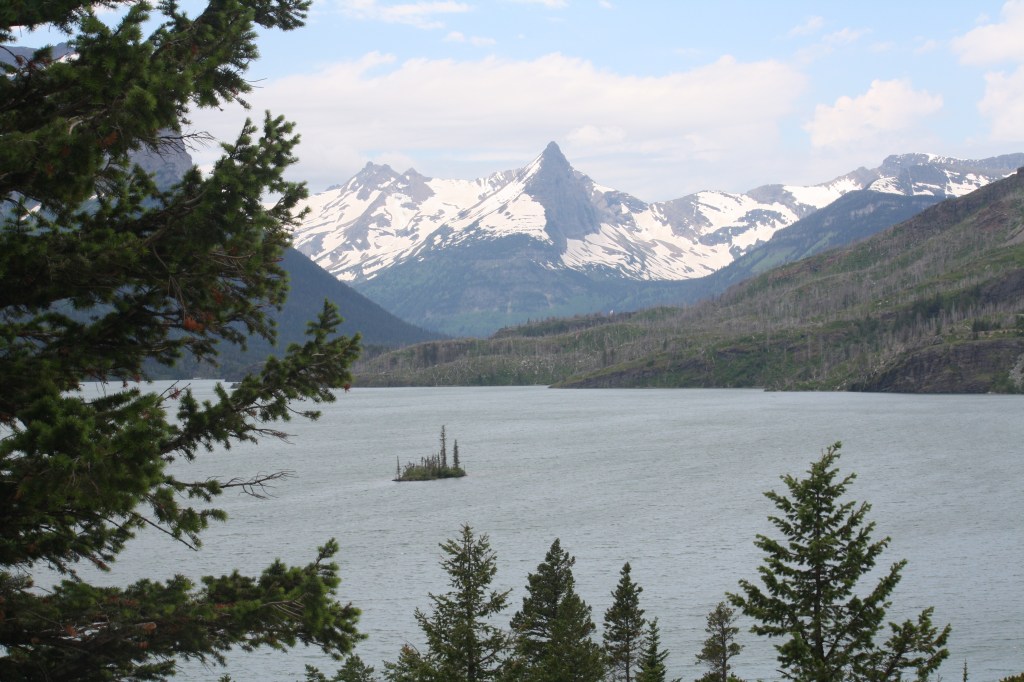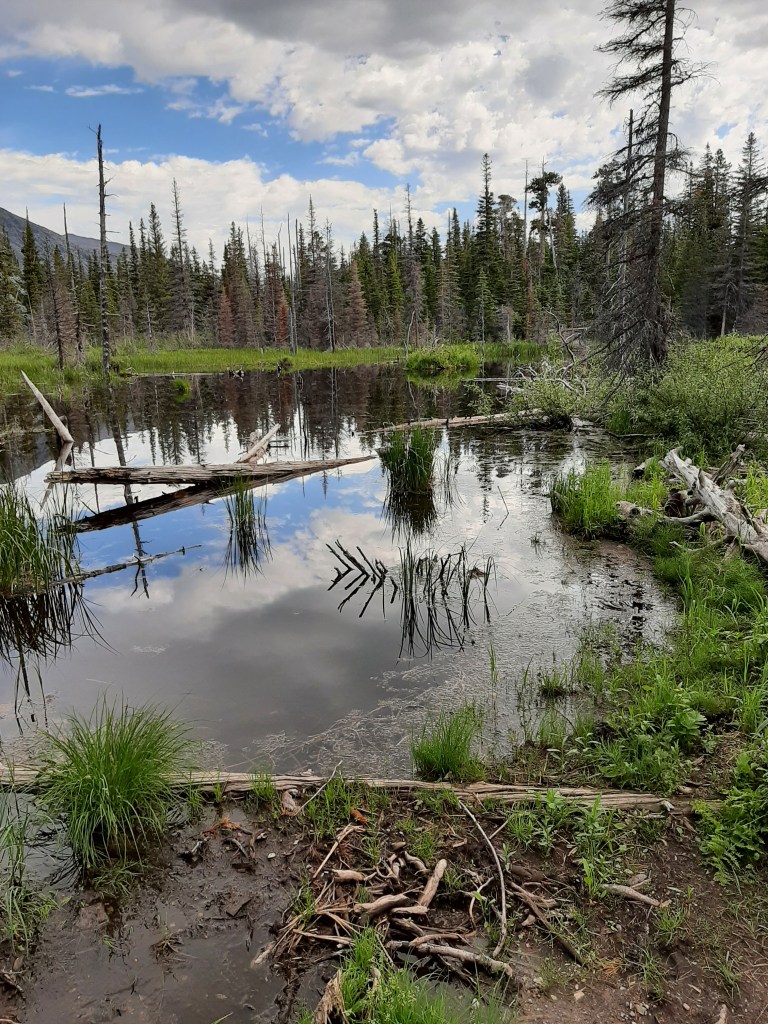Thoughts on Glacier National Park
A recent trip to Glacier National Park brought into focus an unexpected insight into the symbiotic relationship between national parks and trains, along with a sobering note regarding Western expansion.

Over a hundred years ago in 1893, the Great Northern Railway finished laying tracks for the northernmost rail route in the United States westward from St. Paul to Seattle. The developers chose the route over the Rockies carefully, using one of the flattest and most accessible passes. Then, in a concentrated effort to promote rail business for tourists as well as farmers, the Great Northern Railway pushed hard to establish a national park in Montana, well aware that such a designation would encourage folks from all over the United States to visit. Thus financial reasons more than environmental concerns played a major factor in the park’s development.
Glacier Park was established as a national park in 1910, the tenth such park in the United States. The railway made much of the scenic alpine vistas, and further enticed visitors by building chalets and lodges throughout the area.



East Glacier Park Lodge, where we stayed, opened in 1913. The posts are made of huge trees brought in from the west, cedars for the exterior and Douglas fir for the interior of the lobby. In a misplaced tribute to the native Blackfeet, the developers also erected a few totem poles. (The totem poles are very nice art, but have nothing to do with the indigenous Blackfeet of this area.)
The lodge is only a stone’s throw from the railway station, but they offer a free shuttle between the two, an old style red checker limo (replacing the horse and buggy transport of a hundred years ago.)



Though the lodge looks much the same as it did in 1913, much has changed in visiting it. Train travel now offers far more comforts than the slow, chugging steam engines of the past. We stayed in a private roomette in the sleeper car for the twenty hour trip, with excursions on board to the observation car and the diner, where we enjoyed three meals a day.




Instead of traveling into the park by horseback, we took a shuttle bus to enjoy a cruise on Two Medicine Lake


The next day, a bus tour of part of Going to the Sun Road. (We couldn’t traverse the entire 50 miles, because Logan Pass, the highest point in the park and on the road, was not yet open in early July.) This road is the only one that crosses the entire park. Opening in 1933, the road has been registered as a National Historic Place, a National Historic Landmark, and a Historic Engineering Landmark.

Many have called the Going to the Sun Road an engineering marvel, designed to preserve the natural habitat. But others have seen it as a scar upon the sacred land that is the backbone of the world. In other words, this road is a poignant reminder that there are at least two sides to every story. On the one hand, the establishment of the railroads and various national parks have preserved and protected for the whole nation this beautiful and remote wilderness. The land provides needed habitat for many species of plants and animals, and tourism provides jobs for area residents, notably members of the Blackfeet tribe, whose reservation abuts the entire eastern side of Glacier National Park.

On the other hand, many of the Blackfeet people believe the park land was taken from them illegally. Historically, the whole area was the homeland of all three bands of Blackfeet. In 1895, the tribe faced starvation, caused by many factors including the demise of the buffalo. In desperation, some of the leaders sold the land that would become the park for 1.5 million dollars, but in the agreement, they retained the right to hunt, fish, log, and forage on the land. When the ceded land became a park in 1910, the United States government reneged on the agreement, claiming the area as federal property, no longer belonging to the Blackfeet in any way.

This is a sad and disturbing story, though unfortunately it is not an unusual or surprising one, because it has happened so many times in what is now the United States. But the story serves as a stark reminder of the debt we owe to the indigenous people of this land, and the responsibility we all have to provide good stewardship for this very special place. Like the tenacious bear grass that blooms once in seven years, let the land and the people endure.

